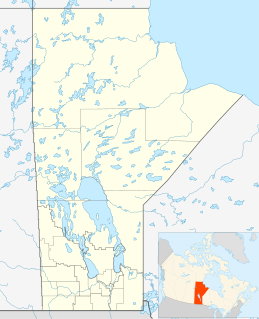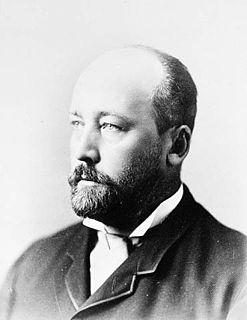
Events from the year 1938 in Canada.
Southern Railway or Southern Railroad may refer to:
Daryl Gary Reid, is a former politician in Manitoba, Canada. He represented the electoral division of Transcona in the Legislative Assembly of Manitoba from 1990 to 2016, serving as a member of the New Democratic Party, and was the speaker of the Legislative Assembly from October 2011 to March 2016.

The Soo Line Railroad is the primary United States railroad subsidiary of the Canadian Pacific Railway, one of seven U.S. Class I railroads, controlled through the Soo Line Corporation. Although it is named for the Minneapolis, St. Paul and Sault Ste. Marie Railroad (MStP&SSM), which was commonly known as the Soo Line after the phonetic spelling of Sault, it was formed in 1961 by the consolidation of that company with two other CP subsidiaries, the Duluth, South Shore and Atlantic Railroad and Wisconsin Central Railroad. It is also the successor to other Class I railroads, including the Minneapolis, Northfield and Southern Railway and Chicago, Milwaukee, St. Paul and Pacific Railroad. On the other hand, a large amount of mileage was spun off in 1987 to Wisconsin Central Ltd., now part of the Canadian National Railway. The Soo Line and the Delaware and Hudson Railway, the CP's other major subsidiary, presently do business as the Canadian Pacific Railway, and most equipment has been repainted into the CP's scheme, but the U.S. Surface Transportation Board groups all CP's U.S. subsidiaries under the Soo Line name for reporting purposes. The Minneapolis headquarters are located in the Canadian Pacific Plaza building, having moved from the nearby Soo Line Building.

Boissevain is an unincorporated urban community in Manitoba near the North Dakota border that held town status prior to 2015. It is located within the Municipality of Boissevain – Morton. Boissevain is a community of just under 1,500 people and it is between Killarney and Deloraine on the east and west with Brandon in the north. The population of the surrounding area, within a 50 kilometre radius of the community, is about 15,000.

Selkirk is a city in the western Canadian province of Manitoba, located on the Red River about 22 kilometres (14 mi) northeast of the provincial capital Winnipeg. It has a population of 10,278 as of the 2016 census.

The Duluth, Winnipeg and Pacific Railway is a subsidiary railroad of Canadian National Railway (CN) operating in northern Minnesota, United States. A CN system-wide rebranding beginning in 1995 has seen the DWP logo and name largely replaced by its parent company. The DWP line is CN's connection between International Falls and Duluth, Minnesota, where the railroad connects to a short stretch of the former Duluth, Missabe and Iron Range Railway before following the former Wisconsin Central to Chicago, Illinois.

Emerson is an unincorporated community recognized as a local urban district in south central Manitoba, Canada, located within the Municipality of Emerson – Franklin. It has a population of 655.
Allen Manvel was the eleventh president of the Atchison, Topeka and Santa Fe Railway.

East St. Paul is a rural municipality in Manitoba, Canada. It is located north-east of and adjacent to the city of Winnipeg, and is part of the Winnipeg Metropolitan Area. The municipality was formed on 3 November 1915 when the municipality of St. Paul (1888-1914) was subdivided into West St. Paul and East St. Paul, with the Red River acting as the dividing line. It encompasses 41 square kilometres (16 sq mi).
The Communist Party of Canada (Marxist-Leninist) ran 65 candidates in the 1997 federal election, none of whom were elected. Information about these candidates may be found on this page.
Monsignor John Joseph Egan was an American Roman Catholic priest and social activist. After initially studying business at DePaul University, he transferred to Archbishop Quigley Preparatory Seminary, completing his studies under the visionary rector Msgr. Reynold Henry Hillenbrand at the University of St. Mary of the Lake. He promoted racial integration and was one of the clergymen who marched with Rev. Martin Luther King, Jr. in the 1965 protest march from Selma to Montgomery, Alabama. For many years he was a member of the board of trustees of the Industrial Areas Foundation. The Egan Urban Center at DePaul University is named in his honor. Egan's papers are housed in the manuscript collection at the University of Notre Dame Archives. The scope and background notes include an extensive list of his accomplishments.

William Fisher Luxton was a Canadian teacher, newspaper editor and publisher, politician, and office holder.

Gypsumville is a community in Manitoba, Canada. It is 242 kilometres north-northwest of Winnipeg in the Interlake Region of Manitoba on the north bank of Lake St. Martin in the Rural Municipality of Grahamdale.
The Minneapolis, St. Paul and Sault Ste. Marie Railroad was a Class I railroad subsidiary of the Canadian Pacific Railway in the Midwest United States. Commonly known since its opening in 1884 as the Soo Line after the phonetic spelling of Sault, it was merged with several other major CP subsidiaries on January 1, 1961, to form the Soo Line Railroad. As time passes, more and more Soo Line equipment is being repainted into the Canadian Pacific's current paint scheme, slowly erasing the Soo's identity as a subsidiary railroad.

Charles Sumner Frost was an American architect. He is best known as the architect of Navy Pier and for designing over 100 buildings for the Chicago and North Western Railway.
William Kennedy was born at Cumberland House, Saskatchewan, a son of the Hudson's Bay Company Chief Factor, Alexander Kennedy and his English/Cree wife, Aggathas Margaret (Mary) Bear, daughter of Philip Turnor a cartographer for the HBC. He traveled extensively through the western region, with his family, residing at many Hudson's Bay Company Posts and Forts including Fort Spokane, and Fort Astoria while his father was the Chief Factor of the Columbia District. At thirteen, he was sent to his father's birthplace of St. Mary's Hope in the Orkney Islands for his education. He returned to Canada after his father's death. Wanting to return to England to become a surgeon like his older brothers, he could not get the sponsorship. Instead, he took employment as a fur-trader with the Hudson's Bay Company HBC).
James J. Egan, FAIA, was an Irish-American architect and fellow of the American Institute of Architects practicing in Chicago, Illinois. He was a partner of the Chicago architectural firms Armstrong & Egan, Egan & Kirkland and Egan & Prindeville, which gained prominence designing Roman Catholic structures.
Michael Wiwchar, C.Ss.R. is a Canadian-born bishop of the Catholic Church in the United States and Canada. He served as the third eparch (bishop) of the Ukrainian Catholic Eparchy of Saint Nicholas of Chicago from 1993 to 2000 and as the fourth eparch of the Ukrainian Catholic Eparchy of Saskatoon from 2000 to 2008.

The Hudson Bay Railway is a historic Canadian railway that built a rail line between Winnipeg, Manitoba in the south and Churchill, Manitoba in the north, on the shore of Hudson Bay.












